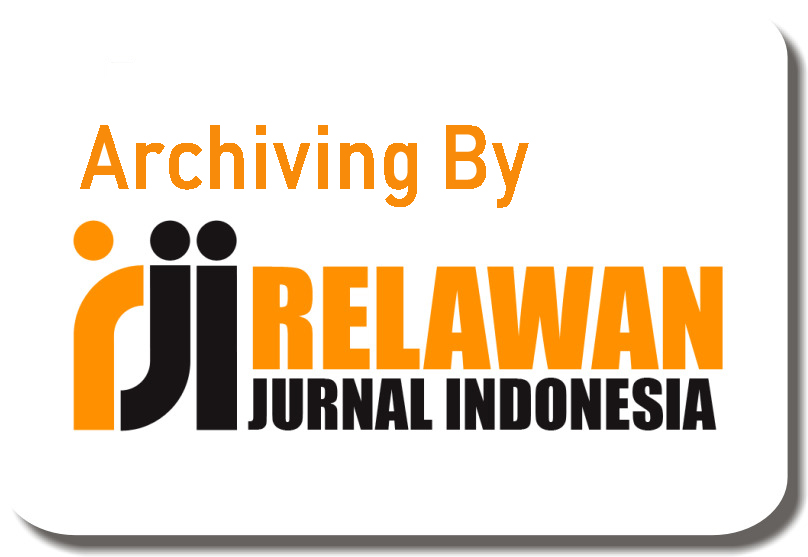YouTube Kids on Children’s English Communication Skills: Parents’ Beliefs and Attitudes
Abstract
Keywords
Full Text:
PDFReferences
Andari, I. A. M. Y., & Wiguna, I. B. A. A. (2022). the Acquisition of English Vocabulary By Kindergarten Students Through Children Songs. Kumarottama: Jurnal Pendidikan Anak Usia Dini, 1(2), 84–97. https://doi.org/10.53977/kumarottama.v1i2.396
Asmiarti, D., & Winangun, G. (2018). The role of YouTube media as a means to optimize early childhood cognitive development. MATEC Web of Conferences, 205. https://doi.org/10.1051/matecconf/201820500002
Braun, V., & Clarke, V. (2006). Using thematic analysis in psychology. Qualitative Research in Psychology, 3(2), 77–101. https://doi.org/10.1191/1478088706qp063oa
Bumigora, U. (2025). Kidsspeak : A Visual Journey Through Educational Media For Young Communicators. 4(2), 1593–1600.
Burroughs, B. (2017). Youtube kids: The app economy and mobile parenting. Social Media and Society, 3(2). https://doi.org/10.1177/2056305117707189
Caldeiro-Pedreira, M. C., Renés-Arellano, P., Castillo-Abdul, B., & Aguaded, I. (2022). YouTube videos for young children: an exploratory study. Digital Education Review, 41, 32–43. https://doi.org/10.1344/DER.2022.41.32-43
Duch, H., Fisher, E. M., Ensari, I., Font, M., Harrington, A., Taromino, C., Yip, J., & Rodriguez, C. (2013). Association of screen time use and language development in hispanic toddlers: A cross-sectional and longitudinal study. Clinical Pediatrics, 52(9), 857–865. https://doi.org/10.1177/0009922813492881
Elias, N., & Sulkin, I. (2017). Youtube viewers in diapers: An exploration of factors associated with amount of toddlers’ online viewing. Cyberpsychology, 11(3 Special Issue). https://doi.org/10.5817/CP2017-3-2
Fonseca-Mora, M. C. (2011). Melodies that help: the relation between language aptitude and musical intelligence. 22.
Friska, Y., & Syafi’i, M. T. (2021). First Language Acquisition on a Three-Year-Old Child. Acitya: Journal of Teaching and Education, 3(2), 267–279. https://doi.org/10.30650/ajte.v3i2.2234
Gordon, R. L., Fehd, H. M., & McCandliss, B. D. (2015). Does music training enhance literacy skills? A meta-analysis. Frontiers in Psychology, 6(DEC), 1–16. https://doi.org/10.3389/fpsyg.2015.01777
Henderson, D., Bailes, T., Sturza, J., Robb, M. B., Radesky, J. S., & Munzer, T. G. (2024). YouTube for young children: what are infants and toddlers watching on the most popular video-sharing app?
Frontiers in Developmental Psychology, 2(May). https://doi.org/10.3389/fdpys.2024.1335922
Imaniah, I., Nurul Fitria Kumala Dewi, & Akhmad Zakky. (2020). Youtube Kids Channels in Developing Young Children’S Communication Skills in English: Parents’ Beliefs, Attitudes, and Behaviors. Ijlecr - International Journal of Language Education and Culture Review, 6(1), 20–30. https://doi.org/10.21009/ijlecr.061.03
Jacob Habgood, M. P., & Ainsworth, S. E. (2011). Motivating children to learn effectively: Exploring the value of intrinsic integration in educational games. Journal of the Learning Sciences, 20(2), 169–206. https://doi.org/10.1080/10508406.2010.508029
Neumann, M. M., & Herodotou, C. (2020). Young Children and YouTube: A global phenomenon. Childhood Education, 96(4), 72–77. https://doi.org/10.1080/00094056.2020.1796459
Nikken, P., & Schols, M. (2015). How and Why Parents Guide the Media Use of Young Children. Journal of Child and Family Studies, 24(11), 3423–3435. https://doi.org/10.1007/s10826-015-0144-4
O.Nyumba, T., Wilson, K., Derrick, C. J., & Mukherjee, N. (2018). The use of focus group discussion methodology: Insights from two decades of application in conservation. Methods in Ecology and Evolution, 9(1), 20–32. https://doi.org/10.1111/2041-210X.12860
Pires, F., Masanet, M. J., & Scolari, C. A. (2021). What are teens doing with YouTube? Practices, uses and metaphors of the most popular audio-visual platform. Information Communication and Society, 24(9), 1175–1191. https://doi.org/10.1080/1369118X.2019.1672766
Rahiem, M. D. H. (2021). Storytelling in early childhood education: Time to go digital. International Journal of Child Care and Education Policy, 15(1). https://doi.org/10.1186/s40723-021-00081-x
Rei-Anderson, C. (2023). Copyright, Commodification and the Structure of Digital Media Economies: Independent Podcasting in Context.
Rosen, L. D., Lim, A. F., Felt, J., Carrier, L. M., Cheever, N. A., Lara-Ruiz, J. M., Mendoza, J. S., & Rokkum, J. (2014). Media and technology use predicts ill-being among children, preteens and teenagers independent of the negative health impacts of exercise and eating habits. Computers in Human Behavior, 35, 364–375. https://doi.org/10.1016/j.chb.2014.01.036
Rosin, B. H. (2013). The Touch-Screen Generation.
Roulston, K., & Halpin, S. N. (2022). Designing Qualitative Research Using Interview Data. In The SAGE Handbook of Qualitative Research Design. https://doi.org/10.4135/9781529770278.n41
Sarwar, M. A., Ahmad, D. D., & Ahmad, S. (2023). Exploring The Influence of Youtube Kids App on Children’s Cognitive Skills. Journal of Journalism, Media Science & Creative Arts, 3(1), 117–136. https://doi.org/10.56596/jjmsca.v3i1.53
Serajuddin, M. (2023). Impact Of Cultural Factors On The Acquisition Of English As A Second Language In Bangladesh. International Journal of Creative Research Thoughts (IJCRT), 11(8), 431–446. https://doi.org/10.13140/RG.2.2.24656.07682
Shahid Hussain, Irsa Ramzan, M. U. A. (2022). Role of Youtube Kids Channel in Socialization of Children during Covid-19.
Strasburger, V. C. (2004). Children, adolescents, and the media. Current Problems in Pediatric and Adolescent Health Care, 34(2), 54–113. https://doi.org/10.1016/j.cppeds.2003.08.001
Utaminingsih, S., Machfud, Santosa, & Kassymova, G. K. (2024). Development of Learning Management with Animated Video to Increase Motivation and Learning Outcomes. Journal of Advanced Research in Applied Sciences and Engineering Technology, 41(2), 31–42. https://doi.org/10.37934/araset.41.2.3142
DOI: https://doi.org/10.31004/jele.v10i2.800
Refbacks
- There are currently no refbacks.
Copyright (c) 2025 Yuliana Friska

This work is licensed under a Creative Commons Attribution-ShareAlike 4.0 International License.



